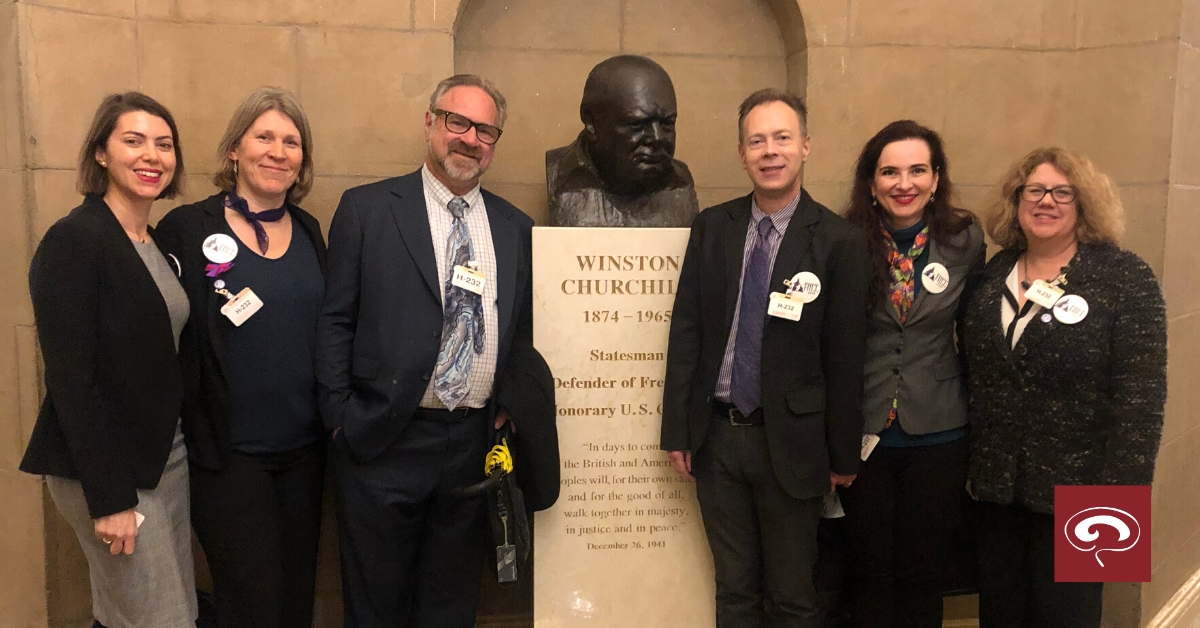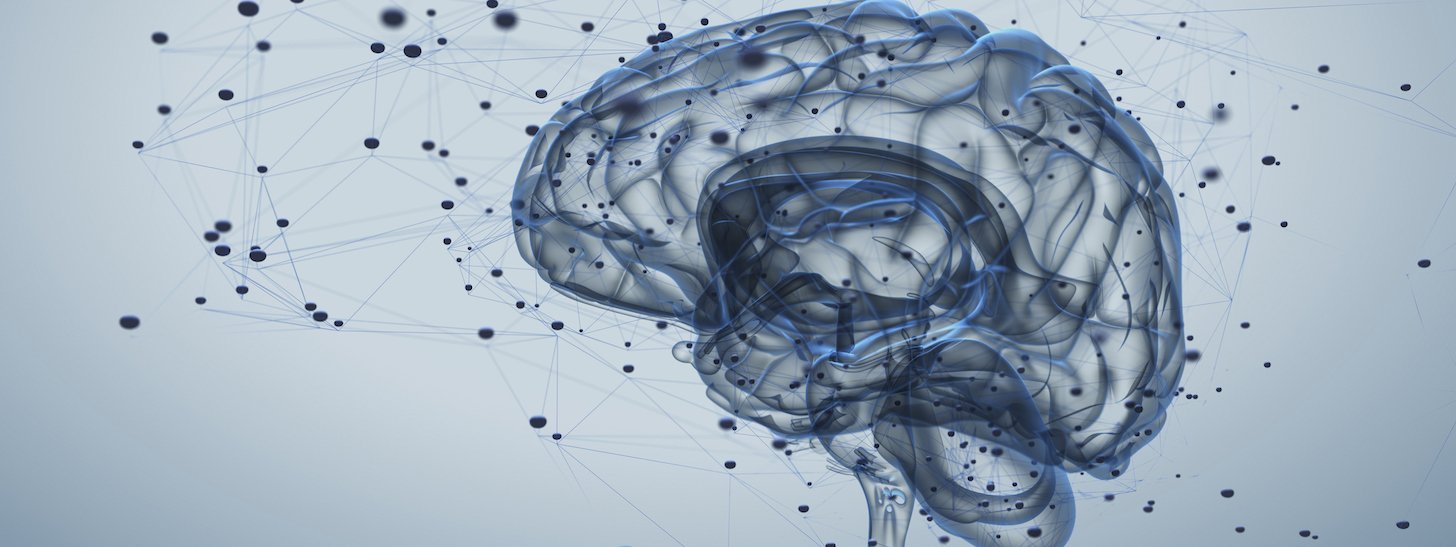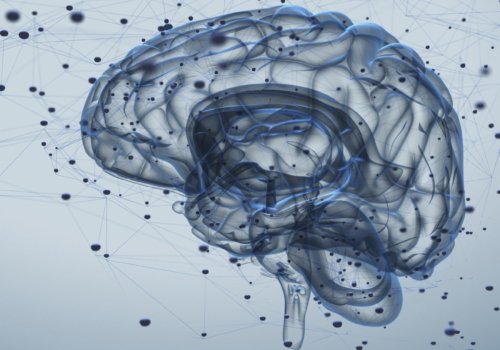
Providers Stand with Patients at Headache on the Hill
American Headache Society members go to Capitol Hill to advocate with and for their patients
This past February, AHS members turned out in large numbers to represent the headache medicine community at the 13th Annual Headache on the Hill. At this legislative advocacy event, patients and providers work in tandem to lobby and educate their representatives and lawmakers about migraine and other headache disorders. This year, participants asked their representatives to amend and pass the Opioid Workforce Act H.R.3414 / S.2892, a bill that could greatly increase the number of doctors trained to treat migraine and headache disorders.
#HOH2020 #americandream so grateful for the opportunity to advocate for headache disorders in DC! @WNGtweets pic.twitter.com/nA4VkuWsgF
— Olivia Begasse de Dhaem, MD (@obegassededhaem) February 11, 2020
We spoke with three AHS members and a patient advocate to hear more about their HOH experiences and how patients and providers can join forces in advocating for the community.
What Inspires Providers to get Involved
AHS member Annika Ehrlich, NP, first learned about Headache on the Hill by attending the Advocacy Session at the American Headache Society’s Scottsdale Symposium. She leapt into the advocacy world, joining the Headache Cooperative of the Pacific (HCOP) Board to take a bigger role in advocating for her patients and the community as a whole.
With fellow @ahsheadache NPs @cab956 and Amy Tees at #HOH2020 working to advocate alongside patients with #headachedisorders – excited to visit legislators tomorrow @AANP_NEWS @AHDAorg @patientaccess pic.twitter.com/xhkUhqslaY
— Annika Ehrlich, MS, FNP-C, CNRN (@EhrlichNP) February 10, 2020
“I love my job and caring for patients, but the day to day struggles to provide this care, like fighting for access to get patients the treatments they need, writing letters to insurance companies– can be draining sometimes,” Ehrlich says. She looks at advocacy as an antidote to burnout and believes that her Headache on the Hill experience helped to re-invigorate her practice. “[At events at Headache on the Hill], when we feel like we are making a difference for our patients and partnering with them in these efforts, that helps prevent burnout for providers.”
Thomas Berk, MD, attributes his passion for advocacy to his mentor William Young, MD, FAHS. “Dr. Young would always say that you’re not really a headache specialist if you’re not also advocating for people with headache disorders,” he says. Dr. Berk has participated in three Headache on the Hill events and calls them “the most meaningful moments of his year.”
Thank you Michael from @RepKathleenRice’s office for your support! #HOH2020 @AHDAorg pic.twitter.com/G6299scoBX
— Thomas Berk, MD (@ThomasBerkMD) February 11, 2020
The Benefit of Providers and Patients Working Hand in Hand
For Ehrlich, the most impactful moment was witnessing a patient advocate in her group tell legislators how chronic migraine had taken away from her family, job and other things she loved.
“We can provide policymakers with numbers, statistics and dollars lost on productivity, but this will never be the same as having someone who has lived through it be able to tell and share their own personal experience,” she says.
174 advocates. 45 states. 250 Congressional visits. Together we will #MoveAgainstMigraine. Together, we are as relentless as #migraine. #HOH2020 @ahsheadache https://t.co/YyzShd31MU
— Amaal Starling, M.D. (@AmaalStarling) February 10, 2020
Patient Advocate and Headache on the Hill veteran Jamie Valendy agrees with the coordinated approach, saying, “When we approach lawmakers, they need to know the facts and figures of the disease and its societal impact, but it’s the individual stories of what it’s like living with the disease that connects us and leads to change.”
Valendy lives with migraine and went to Headache on the Hill to advocate alongside her headache specialist, Amaal Starling, MD, FAHS. She has advocated at HOH twice so far with Dr. Starling and called it an “encouraging and hope-filled experience.”
The Importance of Advocacy
Events like HOH bring the community together and show patients and providers that they are not alone. “Fighting and working together makes us stronger, inspires hope, and can help with healing,” says Ehrlich. “Being visible and speaking up takes headache disorders out of the shadows and into the national discourse, and inspires others to stand up and participate in events like this, too.”
Fellow first-time HOH participant Olivia Begasse de Dhaem, MD, loved the sense of community that the advocacy event provided. “It was so great to feel togetherness and community with a group of people who really care and want to advocate.” She notes that the world of headache is a close knit one, “I feel like everyone is so supportive and working with each other. It’s a true community.”
Advocacy Moving Forward
While Headache on the Hill is a one-day event, there’s still much to be done to continue that momentum. “Advocacy is not just a one day endeavor—it’s something you can do every day in big and little ways,” says Dr. Berk, going on to highlight the importance of breaking down the stigma of migraine.
“Showing up and getting involved is what will move us forward toward reduced stigma, increased understanding and funding, and more effective therapy options,” says Valendy.
She went on to say, “Providers, people living with headache disorders, and caregivers all need to work together because our numbers and our voice are what will lead to a brighter future for all those living with headache disorders.”


